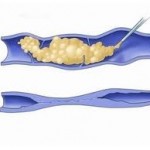Spider veins of the legs are a common concern for many women. While their main concern is usually that of a cosmetic distraction, some women will have discomfort with them as well. They often appear in patches and may have deeper blue veins in the vicinity of the spider patch. This indicates, like the leafs on a tree, that spider veins are not isolated entities and are the result of valve incompetence of the larger venous system onto which they are conbected. This suggests that the treatment of spider veins in many cases will prevent further progression of the problem.
Despite the widespread availability and marketing of laser treatments, sclerotherapy is the gold standard in the treatment of spider veins. In the United States, the use of hypertonic saline and sodium tetradecyl sulphate (Sotradecol) are the two injectable agents available for use. While each has its proponents, there is no clear evidence that one is more effective than the other in experienced hands. Outside the United States, however, polidocanol (POL) is more commonly used.

In a 2010 issue of the journal Phlebology, a double-blind randomized comparative clinical trial of polidocanol, sodium tetradecyl sulphate and isotonic saline was published. In 316 patients, 160 spider veins and 156 larger reticular veins were treated with one of the tested injections. Digital images were taken prior to injection and at 12 and 26 weeks after the last injection. The study showed that more patients were satisfied with POL at 12 and 26 weeks (84%, 88%) compared to Sotradecol (64%, 63%) and isotonic saline. (14%, 11%) Injection site reactions (irritation, discoloration, necrosis) were significantly more frequent in patients treated with Sotradecol as compared with POL.

Dr. Barry Eppley
Indianapolis, Indiana


